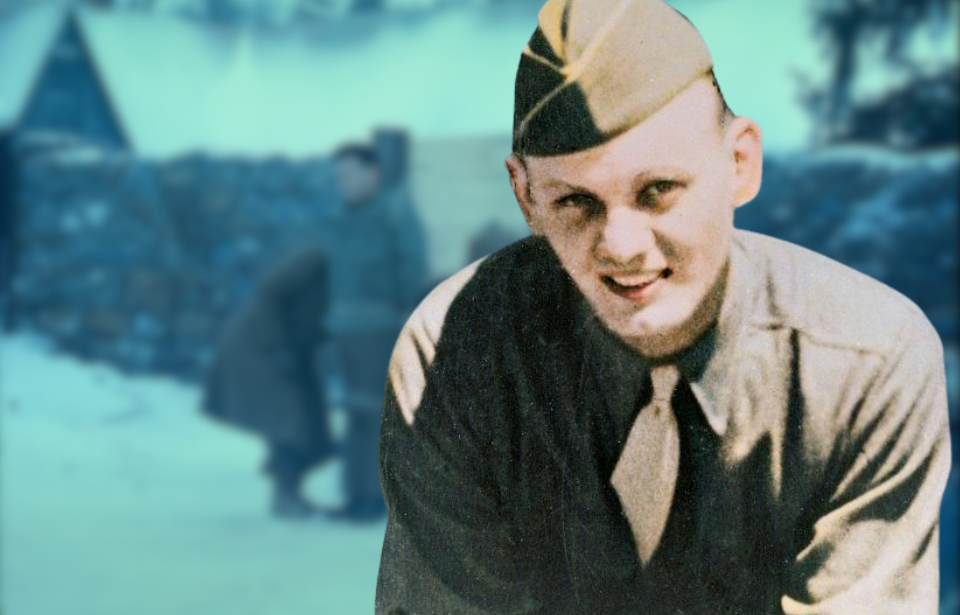Desertion posed a significant issue for both Allied and Axis armies during World War II. Within the U.S. military, most deserters were reported in the European Theater, with an estimated 50,000 cases. Punishments for desertion varied widely; although 49 men received death sentences, all but one were later reduced. As a result, Pvt. Eddie Slovik became the sole American serviceman executed for desertion throughout the war.
Eddie Slovik joins the war effort
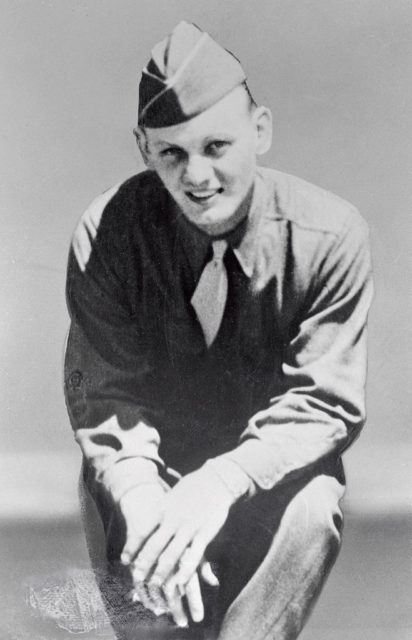
Born in Detroit, Michigan in 1920, Eddie Slovik earned quite the rap sheet at a young age. He was first arrested when he was only 12 years old, and committed numerous crimes in the following years, including disturbing the peace, break and enter, and petty theft.
Slovik served nearly a year in prison, beginning in October 1937, before he was paroled. This didn’t last long, however, as he stole a car while drunk and crashed it, which sent him back to prison. He was paroled, again, in April 1942, and went on to obtain a job in plumbing and heating.
Although World War II was well underway by this point, Slovik wasn’t eligible to enlist, as he was considered a criminal and, therefore, deemed “morally unfit for duty.” A year after marrying his wife, this classification system was changed, and he was drafted into the US Army on January 3, 1944.
After completing basic training Stateside, Slovik was sent overseas with the 3rd Replacement Depot.
Deserting his post
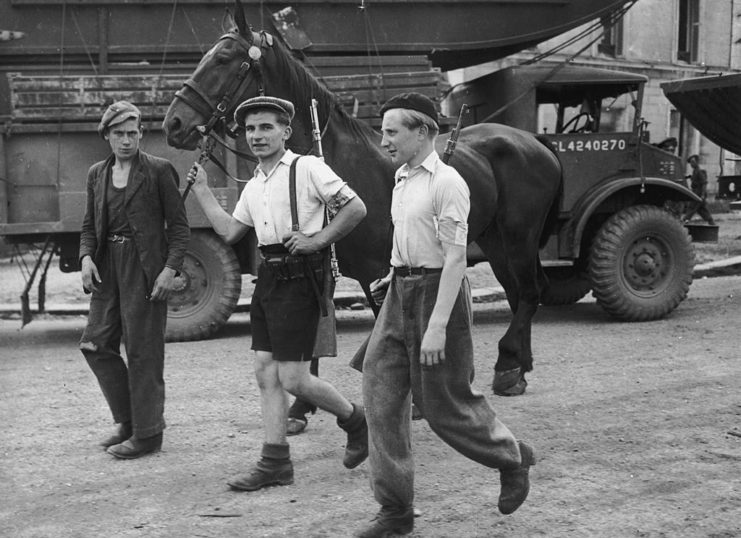
Eddie Slovik was assigned to the 28th Infantry Division, despite his vocal hatred of guns, and placed in Company G of the 109th Infantry Regiment.
While traveling near Elbeuf, France, he and Pvt. John Tankey were forced to seek cover during an artillery attack, which caused them to become separated from their unit. Left behind, the two joined a Canadian military police unit for six weeks, where they cooked, drove trucks, and guarded enemy prisoners of war (POWs). Eventually, Slovik’s company was notified of his and Tankey’s location and arranged for their return to their comrades on October 7, 1944.
The artillery attack had clearly left a lasting impact on Slovik, who told Capt. Ralph Grotte that he was too afraid to serve on the frontlines and requested a transfer. He made it explicit that if he were assigned to the rifle platoon at the front, he would flee, to which Grotte firmly replied that such an act would be considered desertion.
Grotte refused Slovik’s request for reassignment, and, as he had warned, the private deserted his post the next day. Tankey attempted to stop him but was unable to do so.
Eddie Slovik is taken into custody
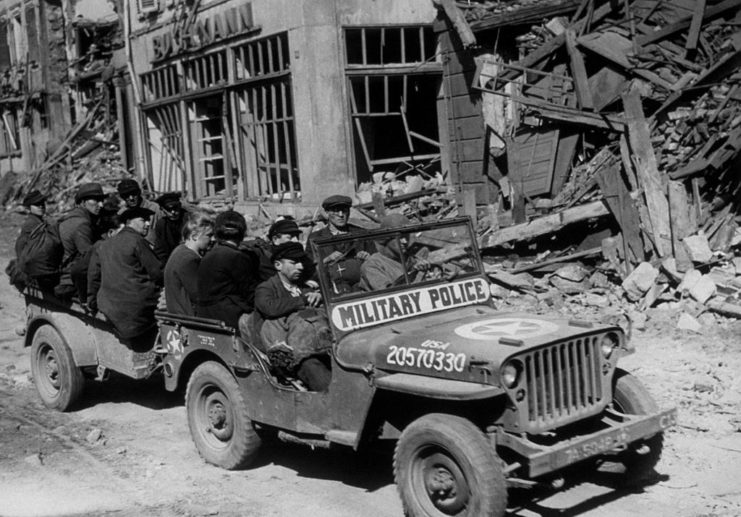
Unlike most soldiers who went AWOL, Eddie Slovik made no attempt to hide what he’d done—neither in the moment nor later. After abandoning his unit, he approached a cook from a military government post tied to the 112th Infantry Regiment and handed over a handwritten note. In it, Slovik openly admitted deserting and declared he would repeat his actions if sent back into combat. The cook informed the military police, who then escorted Slovik back to his commanding officer.
Rather than ordering his immediate arrest, the commander urged Slovik to tear up the note and reconsider—but he refused. Lt. Col. Ross Henbest later gave Slovik another opportunity: return to duty and avoid punishment. Slovik declined again.
With no other options left, authorities took him into custody and directed him to draft a second note confirming that he understood the legal consequences of the first.
Eddie Slovik is court-martialed
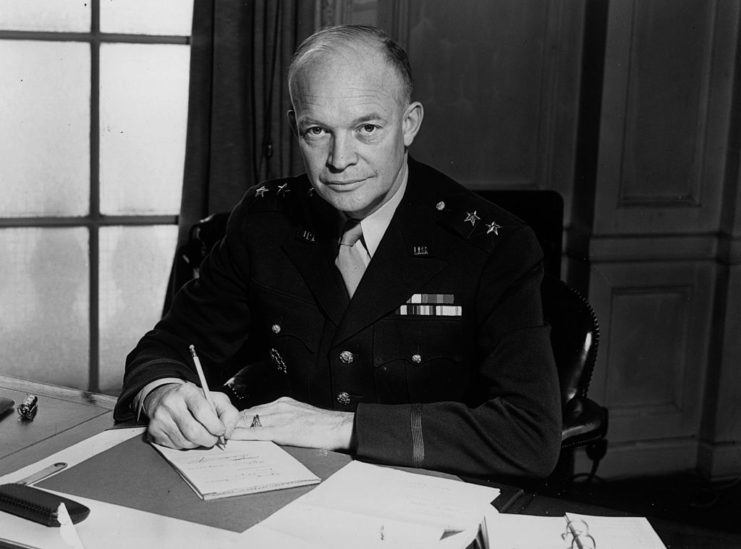
Eddie Slovik appeared in front of divisional judge advocate Lt. Col. Henry Sommer, who also offered him the chance to rejoin his unit. Sommer also presented him with the option to move to an entirely different infantry regiment, with the understanding that the reason for the transfer not be disclosed. Slovik was skeptical, and said, “I’ve made up my mind. I’ll take my court martial.”
As expected, he was charged with desertion to avoid hazardous duty and court-martialed on November 11, 1944. During the trial, many servicemen were called forward to attest that Slovik had intended to run away. To make matters worse, he refused to testify and defend himself.
When the trial concluded, Slovik was sentenced to death. He was shocked by the verdict, as he’d been expecting to receive 20 years of hard labor. As a last ditch effort to save himself, he reached out to Gen. Dwight D. Eisenhower, in the hope he would commute the sentence. The Supreme Commander of the Allied Expeditionary Force refused, noting that the US Army needed to discourage further desertions.
Execution at the hands of the US Army
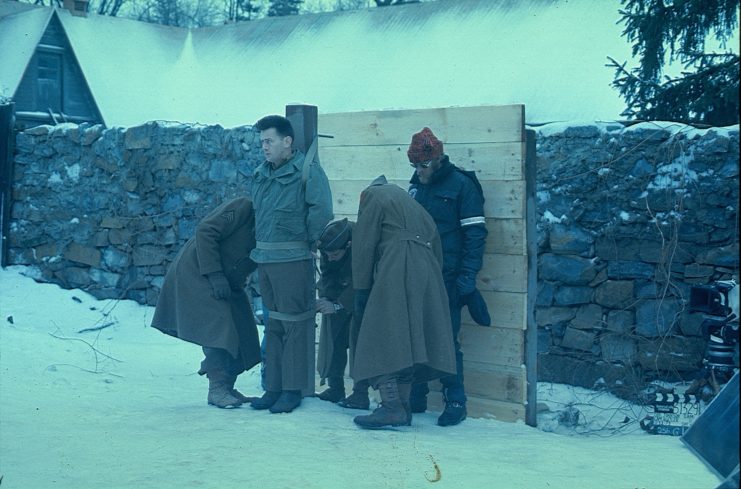
At only 24 years old, Eddie Slovik was executed by firing squad at 10:04 AM on January 31, 1945. It’s believed his last words were to Father Carl Patrick Cummings, who was in attendance. Shortly before the execution, the chaplain said to him, “Eddie, when you get up there, say a little prayer for me,” to which Slovik responded, “Okay, Father. I’ll pray that you don’t follow me too soon.”
It’s believed Slovik was executed, rather than his sentence commuted, for a number of reasons. Some have pointed out that it was a matter of being in the wrong place, at the wrong time. The US Army was experiencing a higher than normal level of desertion, so wanted to make a statement.
According to Slovik himself, “They’re not shooting me for deserting the United States Army, thousands of guys have done that. They just need to make an example out of somebody and I’m it because I’m an ex-con. I used to steal things when I was a kid, and that’s what they are shooting me for. They’re shooting me for the bread and chewing gum I stole when I was 12 years old.”
The Execution of Private Slovik (1974)
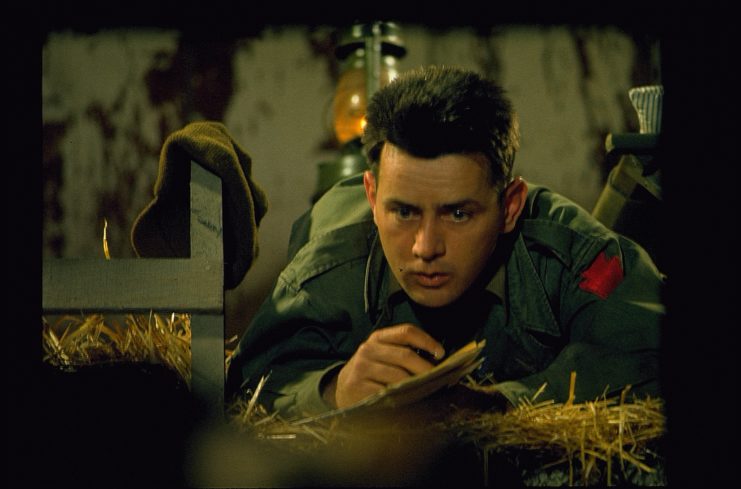
The death of Eddie Slovik was depicted in William Bradford Huie’s 1954 book, The Execution of Private Slovik, as well as the 1974 movie of the same name.
Huie’s work came together after he was shown a European graveyard that contained the remains of unidentified US soldiers. He set to work investigating the site and identified Slovik as one of the bodies. Although Eisenhower made an effort to stop the book from being published, the then-US president was unsuccessful.
More from us: Frederic Walker: The Most Successful Anti-Submarine Commander During the Battle of the Atlantic
Interestingly, it was Frank Sinatra who first acquired the rights to turn the book into a film. There was significant public backlash to this, with many accusing the musician of being a Communist sympathizer. Ultimately, he sold the rights to filmmaker Richard Dubelman, who produced it and cast Martin Sheen in the lead role.
Overall, the movie was well-received and, for the most part, historically accurate, as the film crew referenced Slovik’s declassified military records when outlining the series of events.
